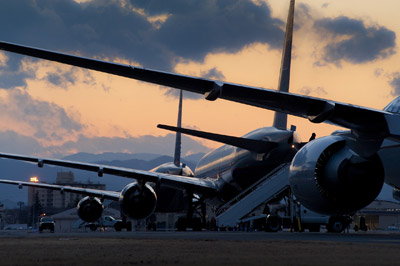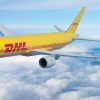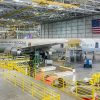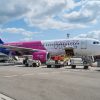 There is no secret that all major Chinese banks have already firmly established their presence in the $125 billion worth global aircraft leasing industry. However, as the industry giants continue to strengthen their position with new acquisitions, mergers and major orders on new aircraft, it seems that less and less room is being left for second tier Chinese investors. Luckily, there might still be a niche for new market entrants which larger players are mostly indifferent to.
There is no secret that all major Chinese banks have already firmly established their presence in the $125 billion worth global aircraft leasing industry. However, as the industry giants continue to strengthen their position with new acquisitions, mergers and major orders on new aircraft, it seems that less and less room is being left for second tier Chinese investors. Luckily, there might still be a niche for new market entrants which larger players are mostly indifferent to.
On 25 November 2015 BOC Aviation, a Singapore-based aircraft leasing company, fully owned by the Bank of China, announced an order of 22 Boeing 737 airplanes. Earlier in October, another Chinese giant – China Construction Bank – had announced its plans to expand the fleet of aircraft leasing arm from 17 to 200 within the period of five years. Moreover, China Aircraft Leasing Group (CALC) is already expecting the delivery of 100 Airbus A320s while ICBC Financial Leasing remains the largest individual launch customer for Chinese C919.
“The major Chinese companies have timely identified aviation as a highly promising and efficient field to employ large amounts of capital at relatively low risk. For instance, ICBC Leasing alone has enlarged its fleet 6 times over the past several years,” comments Tadas Goberis, the CEO of AviaAM Leasing. “Moreover, the potential of the industry is also recognized by the Chinese authorities who have created two special economic zones to stimulate high added value businesses, including aircraft leasing. In addition, even the local construction giants are exploring the industry with approx. $10.5 billion investments already assigned to various aviation infrastructural projects outside China over the past 10 years.”
The ever-growing interest of large Chinese investors in aviation is more than justified – such investments allow employing hundreds of millions of dollars with long-term and rather  high returns. As concerns aircraft leasing, the investment can generate up to 10% returns.
high returns. As concerns aircraft leasing, the investment can generate up to 10% returns.
Moreover, an aircraft itself is considered to be a stable and quite predictable asset. Since aircraft leasing is a dollar-dominated market, investors are secured from any volatility of their local currencies. The investments are backed by hard assets which means that the investors can feel a lot safer when it comes to such risks as the recent Chinese stock market’s “Black Monday”.
Though thousands of new aircraft deliveries are expected to be leased to new owners over the following 20 years, the market is subject to a number of certain limits. One of the main ones concerns the manufacturers’ delivery rates. Of course, there is always a chance that some airline might cancel its orders, meaning that a new market entrant can acquire its delivery slots. However, this kind of opportunities is most usually exploited off market, meaning that new investors do not have the possibility to make it to the line for new aircraft. Luckily, the airlines industry requires not only newly built airplanes, but also those in their mid-life as well.
“Yes, most Asian carriers tend to constantly renew their fleets, keeping the average age below 10 years. Moreover, the global average aircraft economic lifecycle has decreased from 25-30 years to approx. 15-20. But the demand for mid-life aircraft in many world regions is still high,” comments Tadas Goberis, the CEO of AviaAM Leasing.
Start-up and regional carriers as well as some larger airlines in Europe, Africa, the CIS and Latin America are ready to take 7-10 years old aircraft. Of course, mid-life airplanes require more maintenance and might be not as fuel-efficient as the new generation ones. Nevertheless, today fuel prices are at their five-year low, and savings on ownership costs may offset maintenance expenses up to three times, if the process is well managed. In other words, there is still a niche demand for mid-life aircraft. However, since these aircraft require less capital and more control over its operation and maintenance, many major investors tend to skip this segment in favor of newly built machines. This gives opportunities to second tier investors who could also qualify for a piece of the global aircraft finance market, if they or their partners have relevant competence.
“Generally speaking, leasing of new aircraft means that airlines look for the cheapest option to lease or buy the aircraft. Anyone who offers best financing conditions – wins. In the secondary market, aircraft leasing or acquisition requires much less capital, but it requires profound expertise and technical competence in order to both offer efficient aircraft and keep residual values of the asset high. In this case, experience plays a more important role than the availability of cheap money,” concludes the CEO of AviaAM Leasing.





